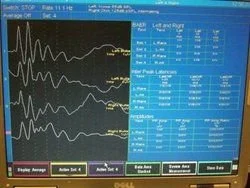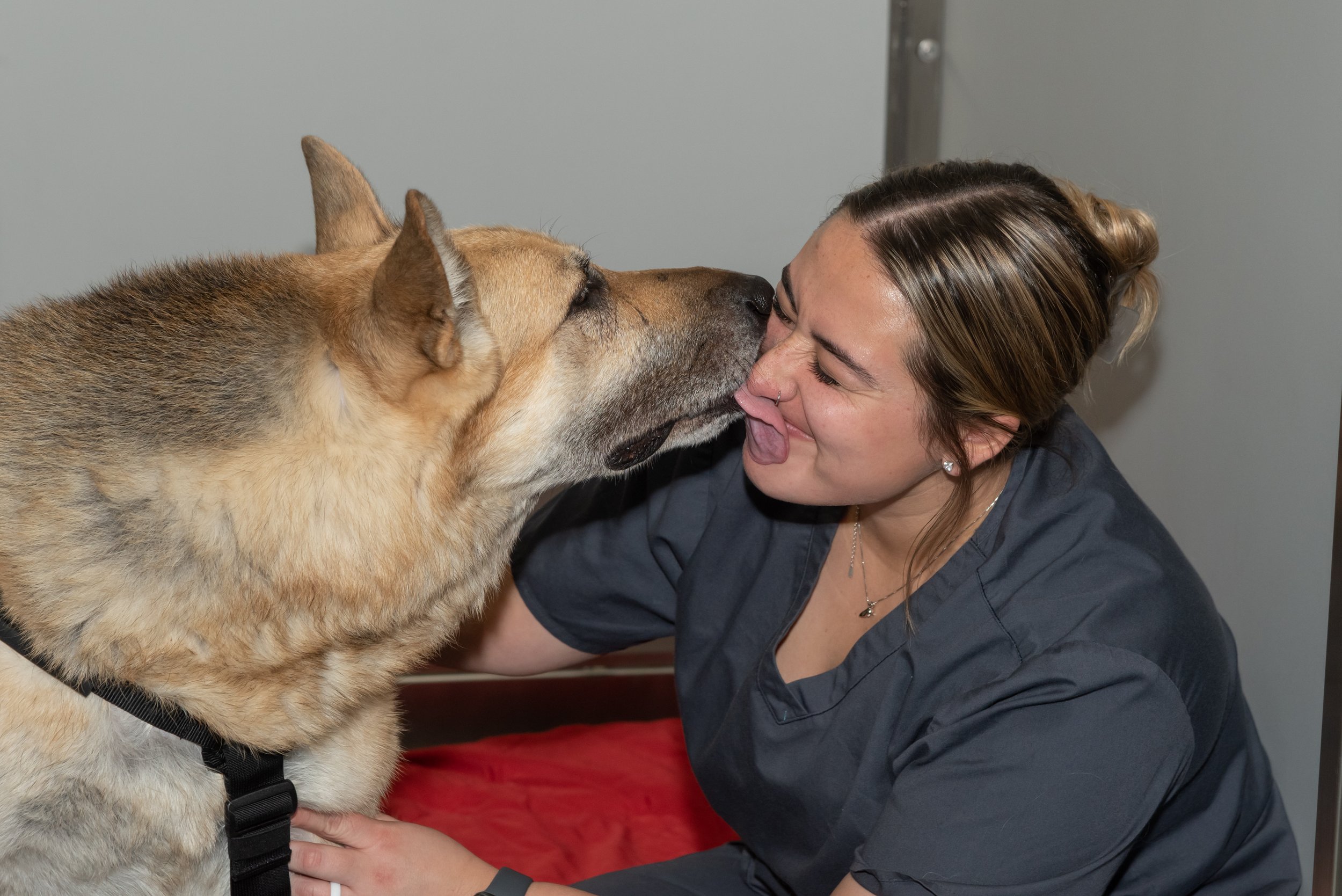
BAER TESTING
VETERINARY HEARING TESTS IN TOWSON, MARYLAND
The Brainstem-Auditory-Evoked-Response (BAER) test is the only 100% reliable method for determining that a dog is deaf. More importantly, it can accurately detect dogs that are unilaterally deaf (deaf in just one ear). Bilaterally deaf dogs are usually easy to identify, as they do not respond to any noises, including very loud or startling sounds. Unilaterally deaf dogs are notoriously difficult to identify because they compensate very well for the loss of hearing in one ear. Dog breeding associations that recognize deafness as a problem in the breed have specific recommendations for breeding BAER-tested dogs.
BAER testing detects electrical activity in the inner ear and auditory pathways in the brain in response to a click that is produced and directed into the ear with a foam insert earphone. The test produces characteristic waveforms that occur within 6 milliseconds of the click. Each ear is tested individually and is judged as “normal” or “deaf”. The total time for the test is between 5-10 minutes per dog. Testing is painless, with the most obvious objection being restraint or inserting the subcutaneous needles (comparable to acupuncture needles). Sedation is rarely needed for testing. Following the test, a printout of the recorded waveforms and a certificate of BAER test results is provided to the owner/breeder.
Please note that a puppy must be at least six weeks of age in order to get an accurate result
-

A puppy being tested. There are needle electrodes inserted under the skin and foam insert headphones are inserted in both ears. Gentle restraint is needed in the majority of cases.
-

The typical set up for BAER testing includes the computer, preamplifier and signal averager.
-

A recording from a normal dog. In this montage, the left ear is represented by the upper two tracings while the right ear is represented by the lower two tracings. The wave forms indicate electrical activity within the brain stem in response to clicks provided by a foam insert headphone.
-

This picture of a recording from a unilaterally deaf dog shows the normal waveforms from the right ear (top tracing) compared to the “flat line” results of the left ear (bottom tracing).






